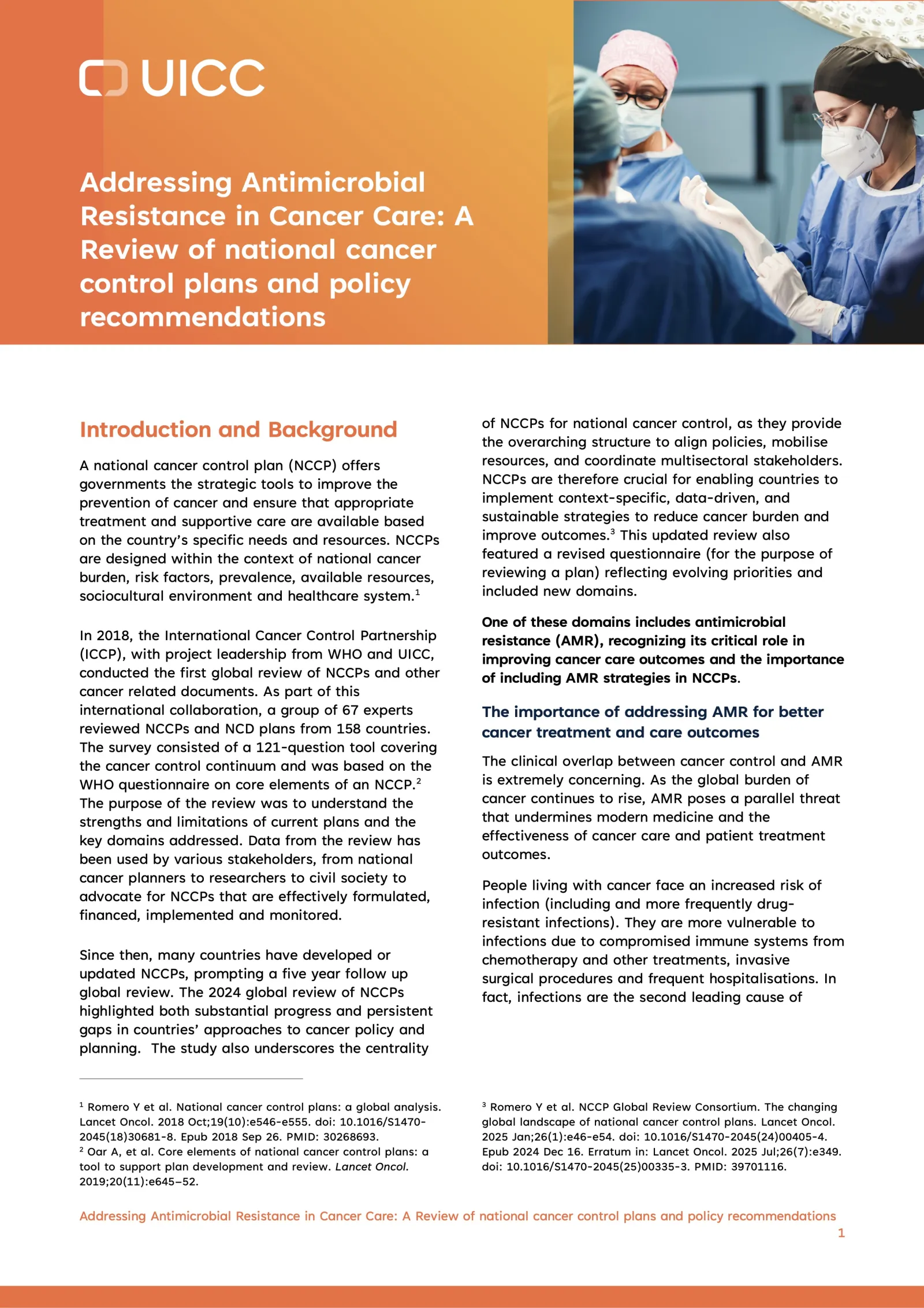Meeting the Challenge
- Integrating AMR strategies into NCCPs is critical for effective cancer control.
- As NCCPs provide governments with the strategic tools needed to improve cancer prevention, treatment, and care, their scope must reflect emerging threats like AMR.
- Including AMR in these plans ensures a coordinated approach to infection prevention and control (IPC), antimicrobial stewardship (AMS), and access to essential antimicrobials and diagnostics. These components are critical to safeguarding cancer patients from drug-resistant infections and ensuring continuity of care.
- Aligning NCCPs with national AMR action plans can foster multisectoral collaboration, optimise resource use, and strengthen health system resilience. As the burden of AMR grows, its integration into NCCPs is a necessary step to protect cancer patients and preserve the effectiveness of life-saving treatments.

Key Tools
Cancer planners are not starting from scratch. A growing body of resources is available to support the integration of AMR into NCCPs. These include WHO guidance on infection prevention and control, antimicrobial stewardship toolkits tailored for low- and middle-income countries, and the WHO Model Lists of Essential Medicines and In Vitro Diagnostics. Additionally, platforms such as the International Cancer Control Partnership (ICCP) portal offer access to global reviews, policy templates, and examples of best practices. Leveraging these tools can help planners embed AMR strategies into cancer control frameworks in a practical, evidence-based, and context-specific manner.
Resources
The Novo Nordisk Foundation has supported this page by grant number: NNF24SA0101658